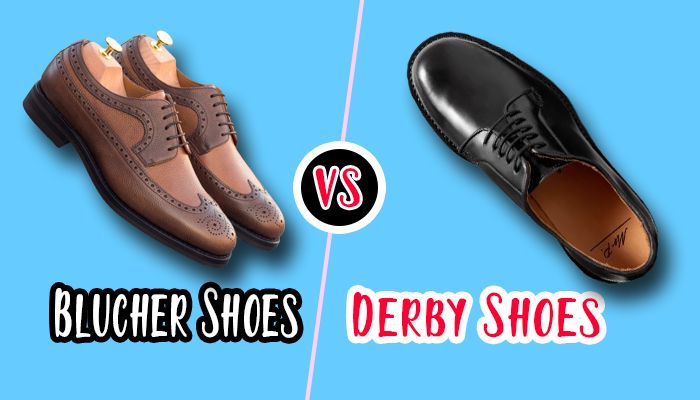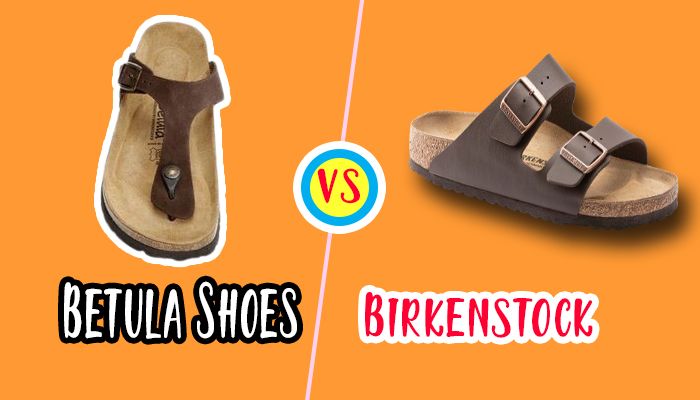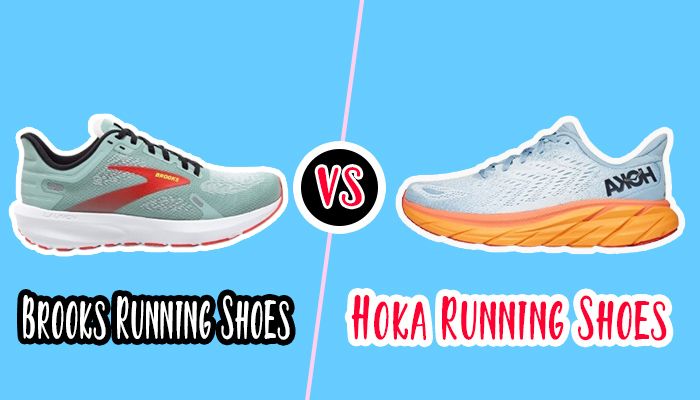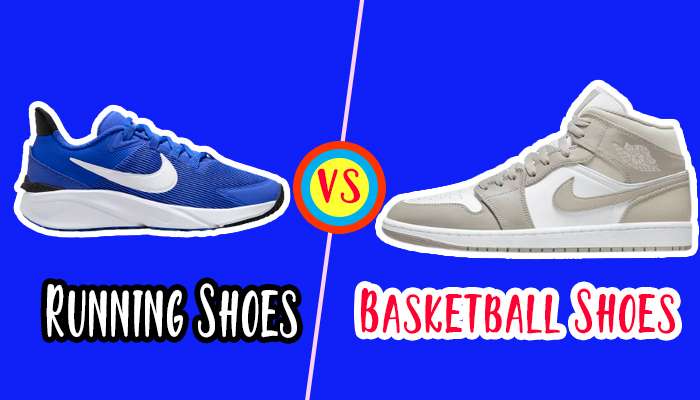Ballet Shoes VS Pointe Shoes | Which One Is Best For You?
In my years as a dedicated ballet dancer, I’ve had my fair share of experience with ballet and pointe shoes. Many people may be confused about the differences between the two. You’ve come to the right place if you’re one of them.
In this comprehensive guide, I’ll walk you through the types of ballet and pointe shoes and their key distinctions and help you make an informed choice. So, slip on your dance shoes, and let’s pirouette into the world of ballet footwear!
Read my recent post- Adidas Men’s vs. Women’s Shoes
Types of Ballet Shoes and Pointe Shoes
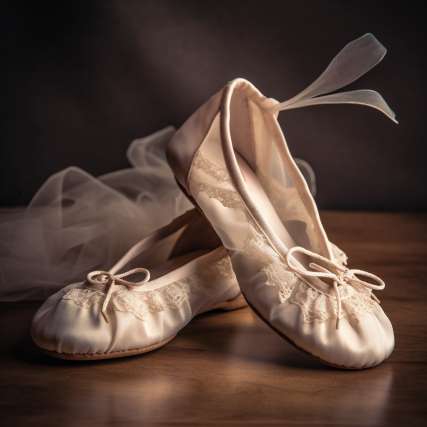
Let’s start by getting to know our main characters, ballet and pointe shoes.
1. Ballet Shoes
Ballet shoes are like the cozy, old sweater in your closet. They’re your reliable companions for every ballet class and rehearsal. These lightweight, slip-on wonders come in two main variations:
2. Ballet Slippers
Ballet slippers, or soft ballet shoes, are your standard issue, beginner-friendly dance footwear. They’re crafted from soft, pliable materials that allow your feet to articulate seamlessly, making them ideal for building a solid foundation in ballet technique.
3. Canvas Ballet Shoes
Canvas ballet shoes are slightly sturdier, thanks to their canvas fabric. They’re particularly well-suited for dancers who prefer more structure and durability without sacrificing too much flexibility.
4. Leather Ballet Shoes
Leather ballet shoes are the classic choice. Many seasoned dancers favor them for their excellent balance of durability and flexibility. These shoes mold to your feet over time, offering a custom fit.
5. Pointe Shoes
Now, let’s introduce the stars of the show – pointe shoes. These are the glamorous divas of the ballet world, reserved for advanced dancers.
6. Satin Elegance
Pointe shoes are synonymous with satin. The delicate satin fabric and the iconic box – the rigid, supportive front of the shoe – make pointe shoes so unique and en pointe!
7. The Box Shape
Pointe shoes have a distinctive square-shaped box in the front. When correctly fitted, this box allows dancers to balance their entire body weight on their toes, creating that ethereal look of weightlessness on stage.
Read More: How to Fix Bald Spots on Suede Shoes?
8. Ribbons and Elegance
Pointe shoes are often tied with satin ribbons, adding to their elegance. These ribbons look graceful and help keep the shoes securely in place during the most challenging ballet movements.
Ballet Shoes vs Pointe Shoes
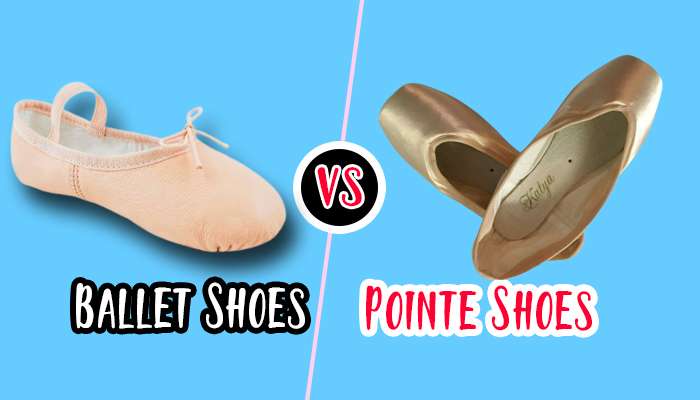
Now, let’s delve into the heart of the matter and explore the differences between ballet shoes and pointe shoes more comprehensively.
1. Support and Structure
Ballet Shoes
Ballet shoes prioritize minimal support and structure. They are designed to enable the dancer to feel the floor beneath them, allowing for precise articulation of movements. These shoes are ideal for exercises at the barre and building a solid foundation in technique.
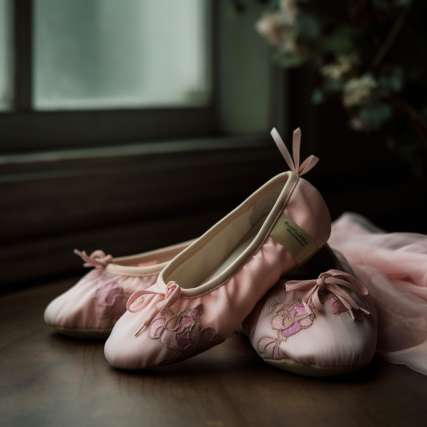
Pointe Shoes
In stark contrast, pointe shoes provide maximal support and structure. Their rigid box and shank, customized to each dancer’s needs, allow for the dancer to rise onto their toes. This creates the iconic ‘en pointe’ position, a defining feature of classical ballet.
2. Intended Use
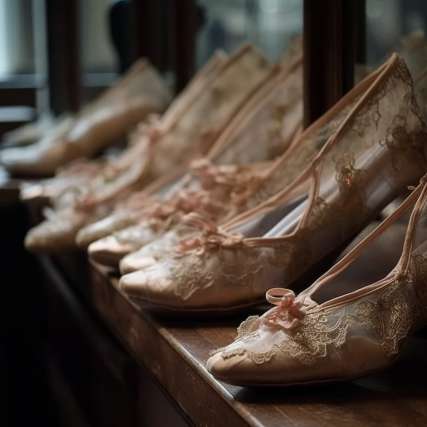
Ballet Shoes
Ballet shoes are versatile and designed for everyday training and rehearsals. They excel in helping dancers perfect their technique, whether at the barre or performing adagios and allegros.
Pointe Shoes
Pointe shoes are reserved for advanced dancers and are primarily intended for stage performances. These shoes are designed to create the illusion of floating on air, enabling dancers to execute breathtaking moves that captivate audiences.
3. Comfort
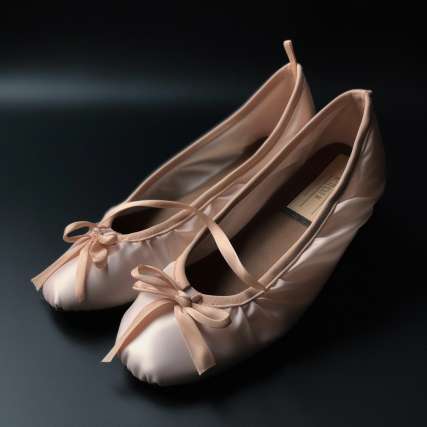
Ballet Shoes
Comfort is the hallmark of ballet shoes. They resemble a second skin, allowing dancers to breathe and move naturally. This comfort is essential for extended hours of training and practice.
Pointe Shoes
Conversely, while exuding elegance, pointe shoes are not known for their comfort. Dancing in pointe shoes requires immense strength and is crafted to prioritize form and aesthetics over ease.
4. Durability
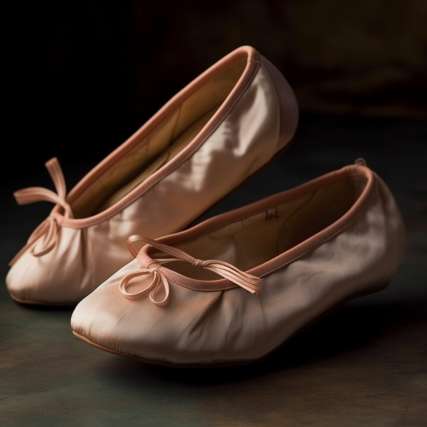
Ballet Shoes
Ballet shoes, especially those made of leather, are renowned for their durability. They can withstand regular use and remain dependable for extended periods.
Pointe Shoes
Pointe shoes are less durable. The construction of these shoes, with their intricate design for pointework, makes them more prone to wearing out quickly, mainly when used by advanced dancers who perform more demanding routines.
Read More: Can You Wear Black Patent Leather Shoes In The Winter?
5. Cost

Ballet Shoes
Ballet shoes are generally more affordable and accessible to dancers of all levels. This affordability makes them a practical choice for beginners and those on a budget.
Pointe Shoes
Pointe shoes, on the other hand, are a significant investment. Their specialized design, customized fittings, and craftsmanship increase their cost. These shoes are a commitment to the art of dance.
Ballet Shoes vs Pointe Shoes: A Comparative Overview
| Aspect | Ballet Shoes | Pointe Shoes |
|---|---|---|
| Support & Structure | Minimal support, flexible for articulation | Maximum support, designed for ‘en pointe’ work |
| Intended Use | Versatile for training and rehearsals | Reserved for advanced dancers in stage performances |
| Comfort | Highly comfortable, like a second skin | Minimal comfort, can be uncomfortable for extended use |
| Durability | Varies (Moderate to Highly Durable) | Less durable, especially for advanced dancers |
| Cost | Affordable, suitable for all budgets | Pricey, considered an investment for serious dancers |
Frequently Asked Questions
Are Ballet Shoes Called Pointe Shoes?
No, ballet shoes and pointe shoes are not interchangeable terms. Ballet shoes refer to the soft, pliable shoes worn by dancers during training and rehearsals. In contrast, pointe shoes are specifically designed for advanced dancers to perform on their toes.
How Do I Choose the Right Size for Ballet Shoes?
Selecting the correct size for ballet shoes is crucial. To ensure a comfortable and secure fit, measuring your feet’ length and width accurately is recommended. Seeking assistance from a professional fitter is advisable to ensure a snug yet comfortable fit.
Can Adults Learn to Dance en Pointe?
Yes, adults can learn to dance en pointe. However, this demanding endeavor requires high strength, balance, and dedication. It is essential to have a professional instructor to guide you safely through the process.
What Should I Do If My Pointe Shoes Are Too Tight?
If you find your pointe shoes uncomfortably tight, don’t fret. Seek the assistance of a professional pointe shoe fitter who can customize or stretch your shoes to provide a more comfortable fit.
Conclusion
In the epic showdown of ballet shoes vs. pointe shoes, it’s clear that each has its unique role and characteristics in the dance world. Ballet shoes are dependable companions for daily training, offering comfort and flexibility.
In contrast, pointe shoes are the epitome of grace and elegance, enabling dancers to craft enchanting moments on the stage.
Reference Link
https://www.performingdancearts.ca/how-to-choose-the-perfect-dance-shoe/
